Straighten up! 5 good posture exercises to improve your life
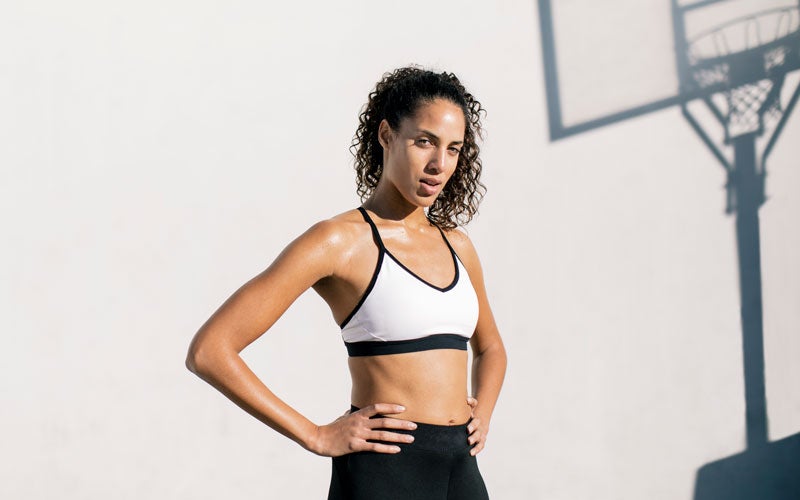 ©Hello Lovely
©Hello Lovely
Not only does good posture have a positive effect on your health; it also makes you feel more confident about yourself and others. Our tips and exercises will show you how to maintain your posture and radiate self-confidence!
What does correct posture look like?
Our everyday life, environment, and even mood have an effect on our posture. Sometimes we consciously sit or stand taller, and sometimes we sit hunched over. Your posture is dynamic: it can change and adapts to external factors. The posture you take most of the day has a definite effect! How long you hold a particular posture can affect your health as well as your mood. What defines an ideal good posture?
Upright vs. lax posture
Due to your muscle power and the body’s natural balance, your body holds itself upright against gravity both consciously and unconsciously. This allows you to either stand up straight or assume a slouchier posture.
A good, upright posture requires muscle tension and for your pelvis to be tucked. To do this, pull your pubic bone forward towards your navel to un-arch your back. Engage your abdominal muscles and glutes, keep your spine straight, pull your shoulders down, and keep your chest open. Or for a short-and-sweet version: core in, chest out! This good posture relieves pressure on your bones, ligaments, and the intervertebral discs in your spine. You can also breathe freely and don’t put any pressure on the internal organs.
With “slack” or “passive” poor posture, you “fall” into your ligaments. When your upper pelvis tilts forward, your torso tilts backwards to compensate, making you arch your lower back. Your shoulders fall forward and your stomach loses its muscle tension. This passive position might be the more comfortable option, but it doesn’t look good and shifts the load back to your ligaments and discs. This can lead to spine strain or back pain.
What does posture say about a person?
Don’t hang your head! Why are you so down today? Maybe you’ve heard these sentences before. There’s a reason we talk like this. We tend to make ourselves unconsciously small when we are feeling unwell, insecure, or sad. We make ourselves big and proudly stick out our chests after we’ve mastered a tough task or are otherwise pleased with ourselves.
Body language is a powerful tool that can reveal a lot about your fellow human beings. No matter if you’re at an important job interview or out with friends, an upright standing posture makes a self-confident and attractive1 impression on others.
A study2 has shown that not only does your state of mind have an effect on your posture, but also vice versa. People who held “power poses” for a minute (e.g., stand up straight, shoulders back, hands on their hips) were more confident than others in a subsequent job interview. The reason: Standing in those positions changed their attitudes. They felt stronger and more self-confident. All the more reason to keep your chin up and stride through life with your head held high!
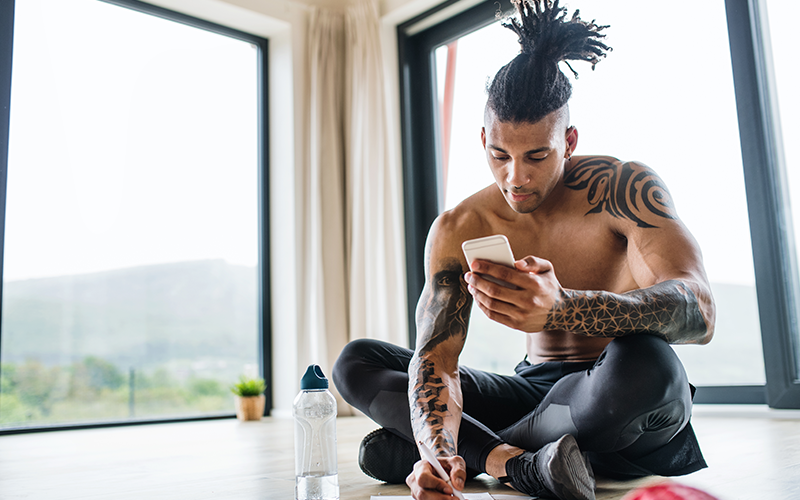
Causes of poor posture
Factors such as your habits, muscular imbalances, and weak muscles can lead to poor posture.
Do you spend a lot of time in a chair at the computer or television, or bend your neck to look down at your phone while walking? Any of these postures tend to unconsciously bring your head and shoulders forward and round your lower back. Even when standing, you might tend to shift your weight to one leg instead of choosing to stand up straight and keep your feet flat on the ground. Over time, these positions can cause you to develop poor posture, back pain, or other related issues.
Do you always carry your bag on one side? Permanent one-sided strain can sometimes lead to imbalances in your muscles and ligaments. Muscular imbalance is an uneven relationship between the agonist, which is the muscle that performs a movement, (e.g. your biceps, which bends your arm), and the antagonist, the muscle responsible for the opposite movement (in this case, the triceps, which straightens your arm).
This unbalanced relationship between your muscles can also be caused by excessive strain, such as during exercise or due to an injury.
On top of that, certain muscles tend to weaken, while others are often “shortened.” What does this mean? The muscle itself doesn’t change in length. Rather, the signals your brain sends are keeping the muscle in this contracted, “shortened” position.
Your muscles are surrounded by fascia. Fascia tissue gives the muscles their shape and supports them during contraction. If you move too little or have too much muscle strain, your fascia can lose their elasticity. Their sensitive nerve endings limit your muscle’s movement. The result: your muscle tenses up and acts shortened.
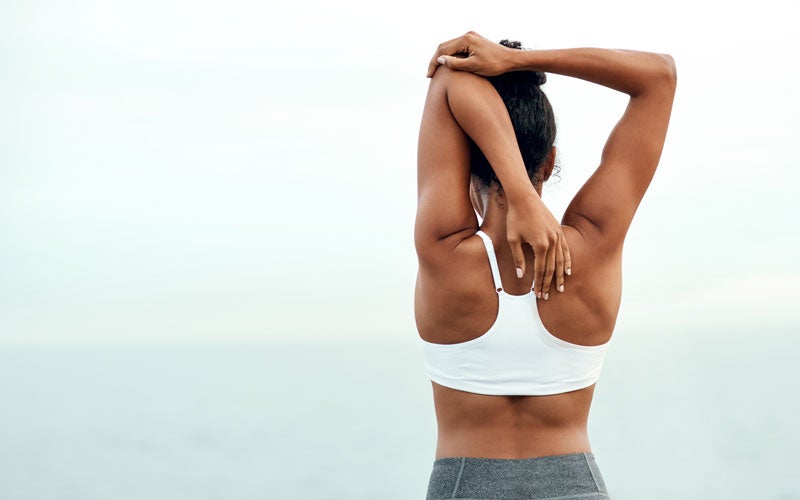
Back muscles, for example, belong to the muscle group that is prone to weakening. Your abs are also part of this group, and so are the glutes. In contrast, people’s large chest muscles are often “shortened” and their necks are tensed. The result? Your shoulders fall forward, your spine rounds, and your good posture disappears in favor of a hunched back.
Worst case, long-term incorrect posture can lead to permanent misalignment or cause back pain. If this happens, consult a doctor.
If your posture is only slightly off, shifting to good posture and incorporating more movement in your everyday life can compensate and eventually correct it. To correct your posture, focus on moves to strengthen your core and other weakened muscles and stretch your shortened muscles. In addition to targeted training, try to think about standing up straight and keeping good posture all day long!
Tips to improve your posture in everyday life
Have you ever thought about your posture doing everyday tasks like putting on shoes or washing dishes? Most of the time we perform these actions automatically, paying no attention to how we carry ourselves. But since we do these activities every day, our form does have an effect on good posture!
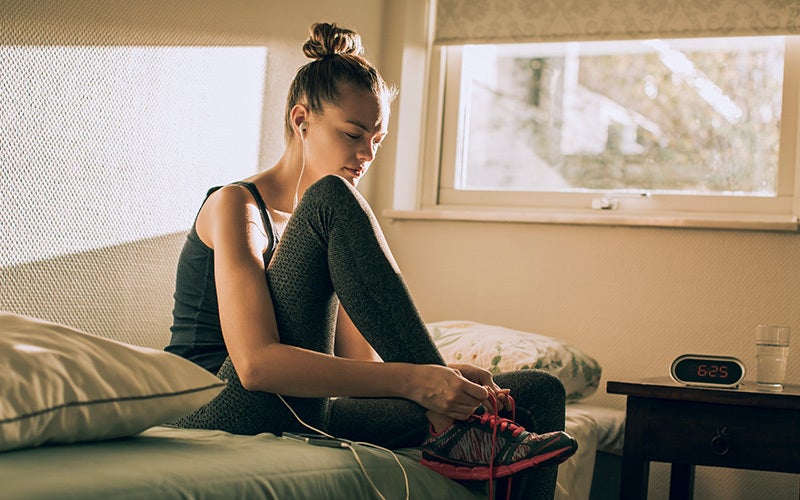
Do you have an office job that keeps you at your computer for 8 hours straight? Try to take conscious and regular breaks to get out of your chair. Get up, walk a little, massage your neck and shoulders, or get a glass of water. Use your lunch break to go for a walk.
Even when sitting down, remember to straighten up from time to time, bring your shoulders back, and hold your body upright. Make sure your screen is high enough, preferably at eye level. This will keep your neck straight rather than making you constantly look downwards.
Healthy food should be a part of an active everyday life.
Looking for inspiration for a balanced, delicious meal for your next lunch? Take a look at our recipes.

Lifting or carrying heavy objects with bad posture can go wrong and lead to injured muscles and ligaments. Need to help a friend move? Imagine you’re doing a deadlift the next time you lift a heavy box. Keep your spine straight and tense your core. Push your glutes back and bend your upper body forward. Bend your knees as well. Grab the box and use the strength of your legs to push yourself up. Straighten up again to an upright position.
Find a balance! We lead a predominantly sedentary everyday life that doesn’t do our posture any favors. Find ways to get more active. Go for more walks with your dog, take the stairs instead of the elevator, or exercise regularly. Whether at home or at the gym, find out what you enjoy and bring more movement into your everyday life!
Exercises for good posture
Before you start doing these exercises, warm up for at least 10 minutes. Ready? Let’s get started! Have fun!
Rowing for a strong back
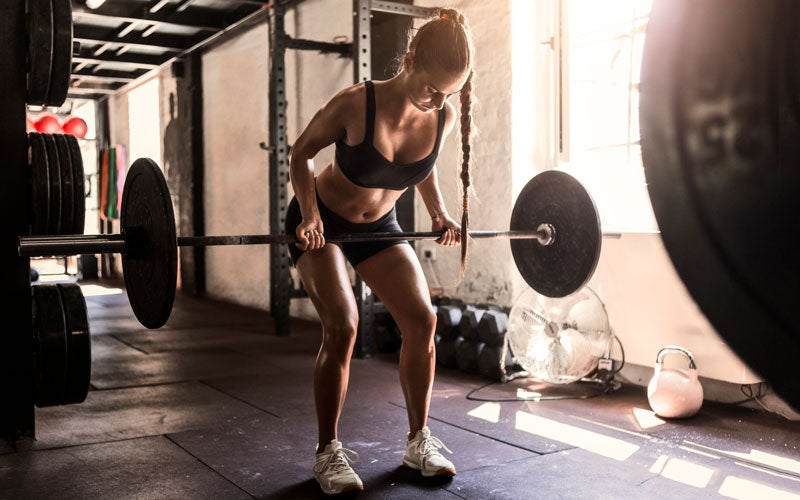
Upright rowing is good for strengthening your upper back and shoulders. Grab a dumbbell, a barbell, or water bottles – adjust the weight to your fitness level. The exercise should be challenging, but not overwhelming.
Bend forward, keeping your spine straight, so that you are bent at a 45-degree angle. Push your pelvis back and keep your legs slightly bent. Bring the weights towards your navel, keeping your elbows close to your body. Concentrate consciously on pulling your shoulder blades together as you pull the weight towards your body. Engage your lower back to keep your spine straight. Do three sets of 15 reps, and rest for a minute between sets.
Strengthening the back of the shoulders
At the gym, you can do Face Pulls to work the back of your shoulders and correct your posture. This exercise helps to straighten up slouching shoulders. You’ll need a cable pull station with a fixed rope. Stand upright and stable and pull the rope towards your face. Your elbows should be at shoulder level and pointing outward. Pull your shoulder blades together. Do three sets of 15 reps, with a 1-minute break between sets.
If you’re working out at home, try Thumbs Ups. Lie on your stomach on the floor, with your toes on the floor and your gaze directed downwards. Extend your arms and keep your thumbs up. Your arms and shoulder should form a line. Raise your arms and pull your shoulder blades together. Repeat the movement 15 times for three sets with a 60-second pause between each set.
Stabilizing the core
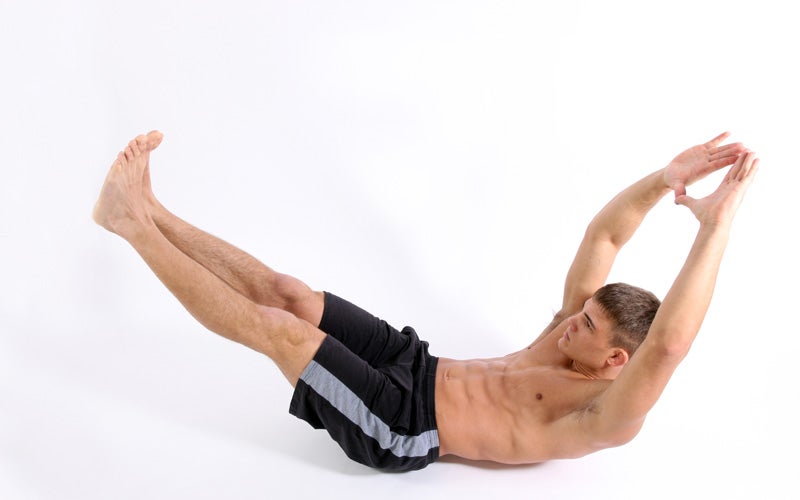
The Hollow Body Hold is a good exercise to strengthen your core muscles. If you’re a beginner, lie on your back and lift your arms and legs off of the floor. Keep your lower back on the ground and your legs together. Don’t arch your back! Be careful not to put your chin on your chest, as this can put tension in your neck. Keep your neck and chin in a neutral position by looking upwards. Engage your entire body and hold this position for 30 seconds. Breathe in and out. Do this 3 times.
If you want to improve, you can try Hollow Body Rocks. It works the same, but with a little extra twist. While you hold the position, start to bob back and forth. Keep tension in your whole body the whole time and try to hold on for 30 seconds. Complete a total of 3 rounds.
Stretching the chest
Our chest muscles tend to get tight and “shorten,” leading our shoulders to slump forward. To stretch your chest, stand straight at a corner of the wall at home or in the gym. Place your right arm against the wall from palm to elbow. Step forward with your right leg. Now turn your upper body slowly to the left until you feel a stretch in your right chest. The palm of your right hand and your elbow should stay “stuck” to the wall the whole time. Hold this position for a few breaths. Then change sides.
To stretch the small chest muscles as well, you have to increase the distance to your shoulders. To do this, change the angle by stretching your arm further up and placing your palm against the wall. Then push your body forward and slightly down. Hold this position for a few moments, then change sides.
Releasing neck tension
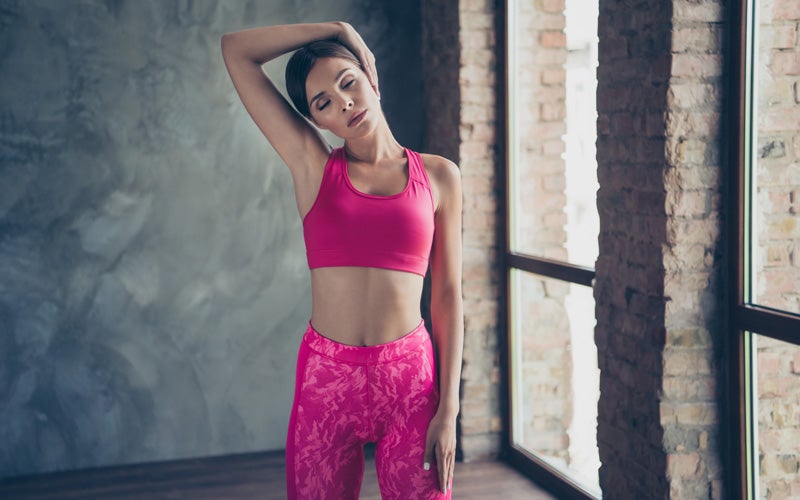
Is your neck tense? Slowly lower your chin towards your chest and hold it for a few seconds, keeping your gaze downwards. Lift your head again and tilt it carefully to the right for a few breaths. Keep your shoulders down. Come back to the center and do the same for the left side. In an upright position, you can also move your head slowly forward and then backward. Repeat this for a few rounds, staying slow the whole time.
Sports like Pilates or swimming also help to keep a straight posture and train your back and core stability. Try out what you like most! The ground rule: stay active and have fun doing it!
Summary
- Poor posture can result from bad habits and muscular imbalances
- With targeted strength and stretching exercises you can improve your posture
- A straight and open body posture appears self-confident and attractive to others
- Your posture influences how you feel about yourself
- Increased exercise in everyday life promotes a healthy, good posture
Sources for this article
We at foodspring use only high-quality sources, including peer-reviewed studies, to support the facts within our articles. Read our editorial policy to learn more about how we fact-check and keep our content accurate, reliable, and trustworthy.
- 1Albert Mehrabian, Jeffrey S. Blum (1997): Physical appearance, attractiveness, and the mediating role of emotions. https://link.springer.com/article/10.1007/s12144-997-1013-0↩
- 2Dana R. Carney, Amy J.C. Cuddy, Andy J. Yap (2010): Power Posing: Brief Nonverbal Displays Affect Neuroendocrine Levels and Risk Tolerance https://journals.sagepub.com/doi/10.1177/0956797610383437↩
































